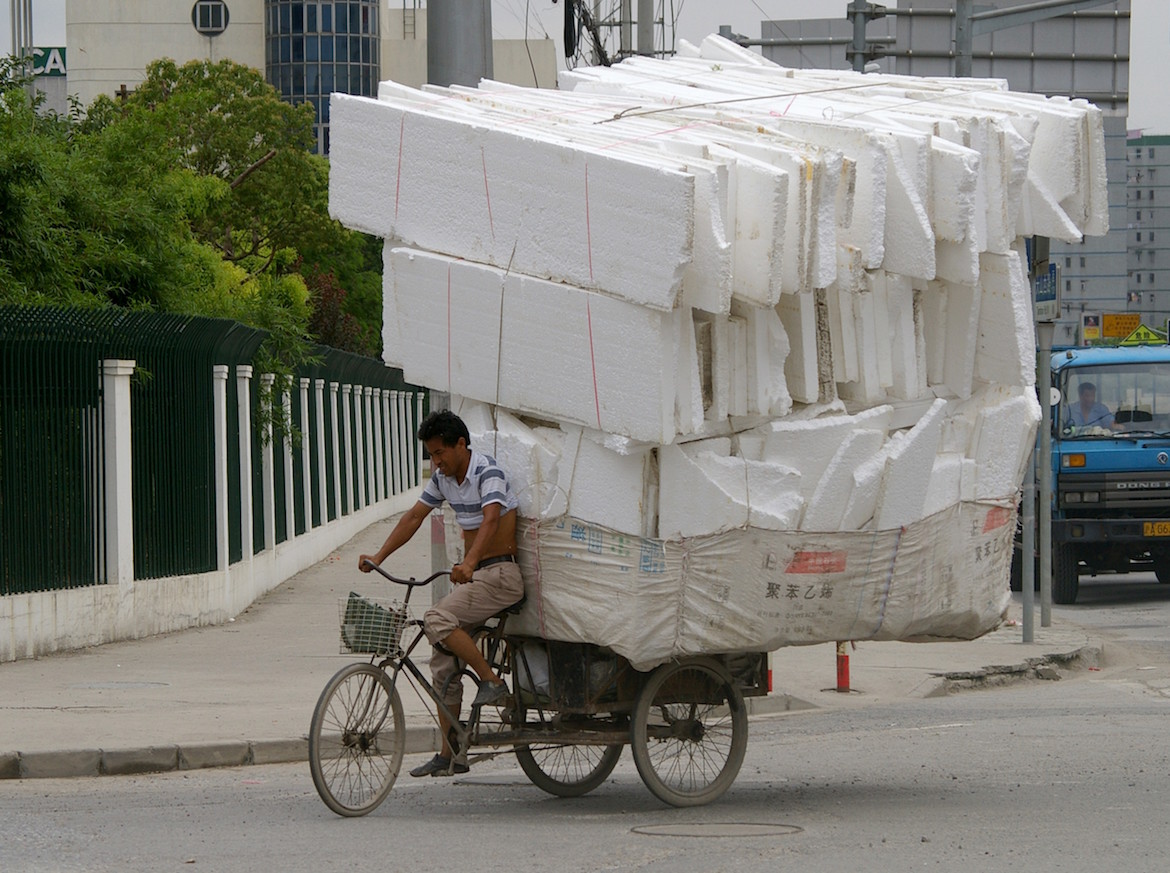Look, Because Here is China Now!
by The Introducing China Editors
Lucky Happy Wonderful Publications, 2,450 pp; $1.49
China, as Kipling or Churchill or one of those types would have said, is an enigma wrapped in a mystery stuffed into a chicken filled with a turkey enveloped by a puzzlement. It is the oldest and, in some ways, the most Chinese civilization on the planet. Yet what do we really know about it? Nothing.
That may change with the publication of Look, Because Here is China Now!, a large (2,450-page) introduction to the China of today. (This is the third in the planned 4,200-book Now You May Learn About China Because It Is Inexpensive series, which began with Hello, China is Now In Your Face and its sequel, Please, Let China Tell You Somethings (sic) Else. The books, commissioned and published by the Communist Party of the People’s Republic of China, come at the highly-subsidized price of $1.49 US, and are issued in all major world languages, including Pig Latin.)
Having thrown off the yoke of Communism and thrown on the yoke of Communism-plus-Capitalism, today’s China offers an intriguing mix of traditional Confucian mores, People’s Republic bureaucratic centralization, capitalist entrepreneurialism, and modern-as-tomorrow digital “zing” plus technological. It’s a big story, told in a big way replete with bigness. But is a lot of mere bigness enough? One wonders.
Indeed, merely to pick up this book and hold it one’s hands is to drop it on one’s foot, crushing one’s toes beneath the weight of its high-quality, high-quantity glossy reproductions. The familiar iconic Chinese images are all here: the half-mile-long phone booths jammed with a single-file line of a thousand people, patiently waiting; the eerie tableau of municipal workers clearing away chunks of Beijing’s notorious air pollution with chain saws and claw hammers; the clock in Shanghai’s Central Rail Terminal, a timepiece so immense it takes two minutes for its sweep second-hand to traverse five seconds, resulting in an ever-slower instrument that, as of May 12, 2017, will be recording the time of a period before it existed; the cheery, disorienting interior of Shenzen’s sole Baskin-Robbins franchise, with its twelve acres of ice cream freezers featuring 38,000 flavors.
Unsurprisingly, in a government-sponsored project such as this, fluency of exposition and felicity of style take a backseat to official propaganda and tourist-luring boosterism. Thus we read, as the caption to a photo from the Beijing Botanical Garden of a plot of 2.3 billion pink flowers in the shape of a rooster, “Look at all of these peonies and then come here and smell them!” Similarly, the caption to a blurred, kinetic photo of suit-clad businessmen swarming a fax machine, breathlessly informs us that, “Today, business is happening at once with modernity!”
But the book presents a more comprehensive portrait than that of mere clichéd Digital Age flash and urban congestion. A little less than three jillion hectares of China consists of rural congestion: giant small-scale farms, mega-strip-malls, one-street villages home to barely more than eighty thousand people. It is what the book calls “The Unseen China That No One Can See” and is well represented, too.
Yet it is hard not to ask, after paging one’s way through what amounts to 2.5 square miles of paper, viewing around 12,000 images, lapsing into a coma, and awakening six days later, “Is that all there is?” Surely there must be more to China than everything and everyone in it. What is the mood of the country? What are its people’s hope and dreams? We must, alas, wait for the subsequent 4,197 books in this ambitious, hernia-inducing series to find out.
